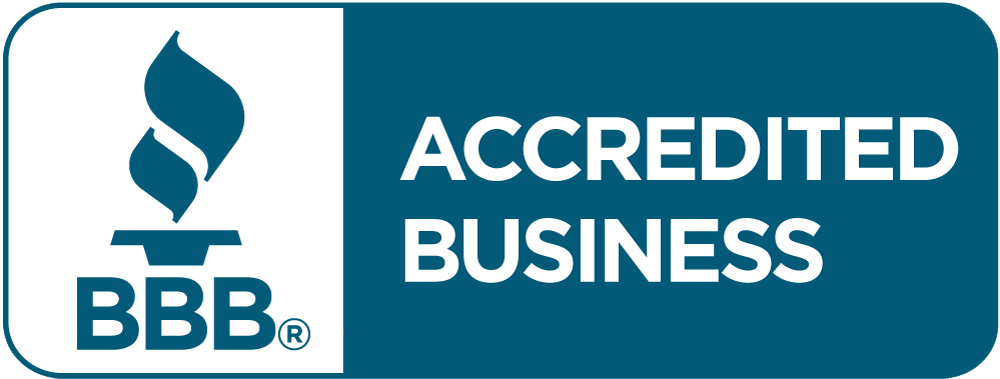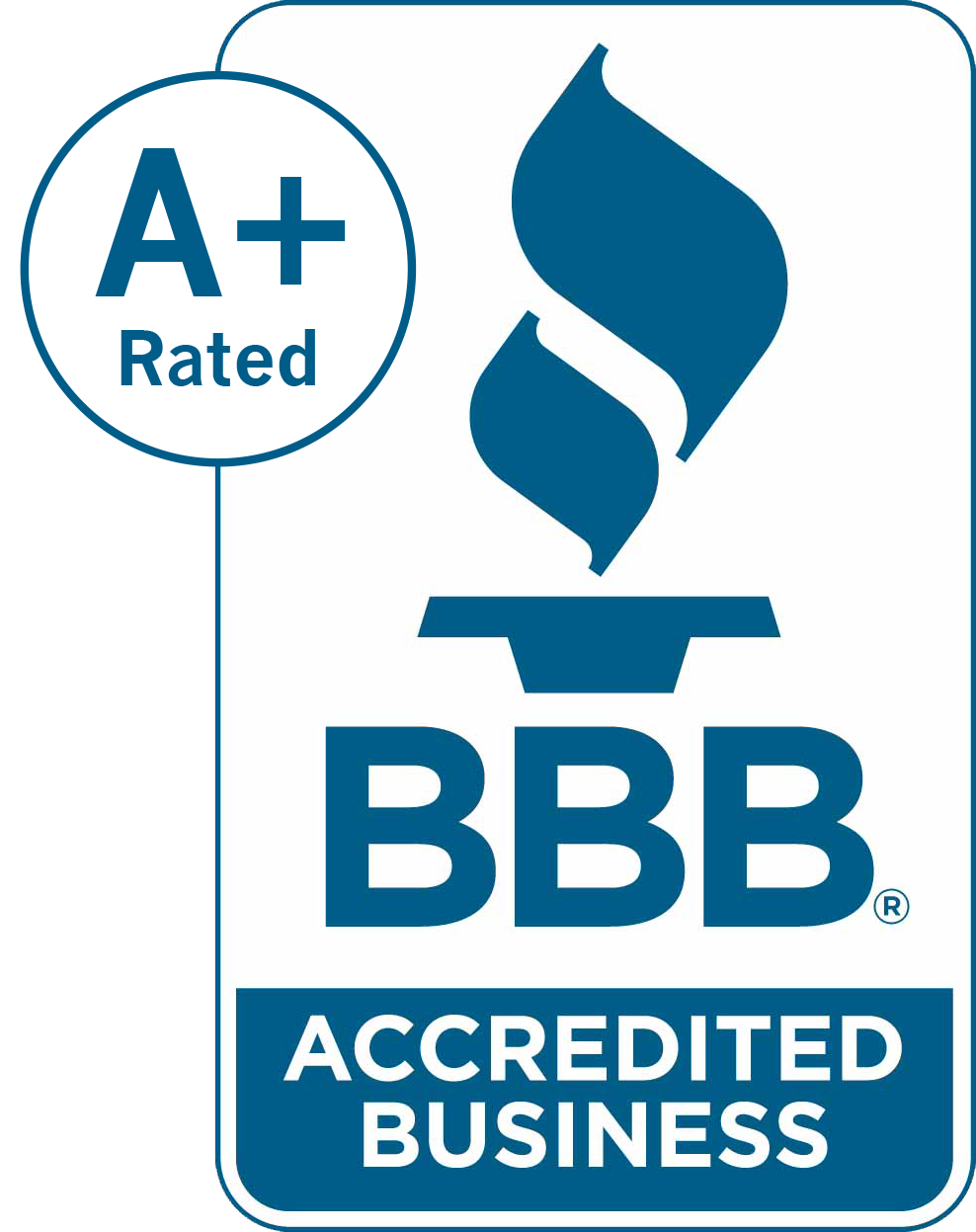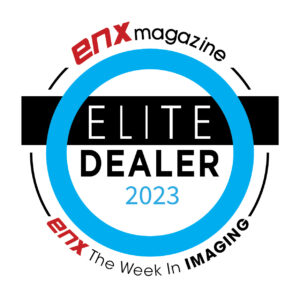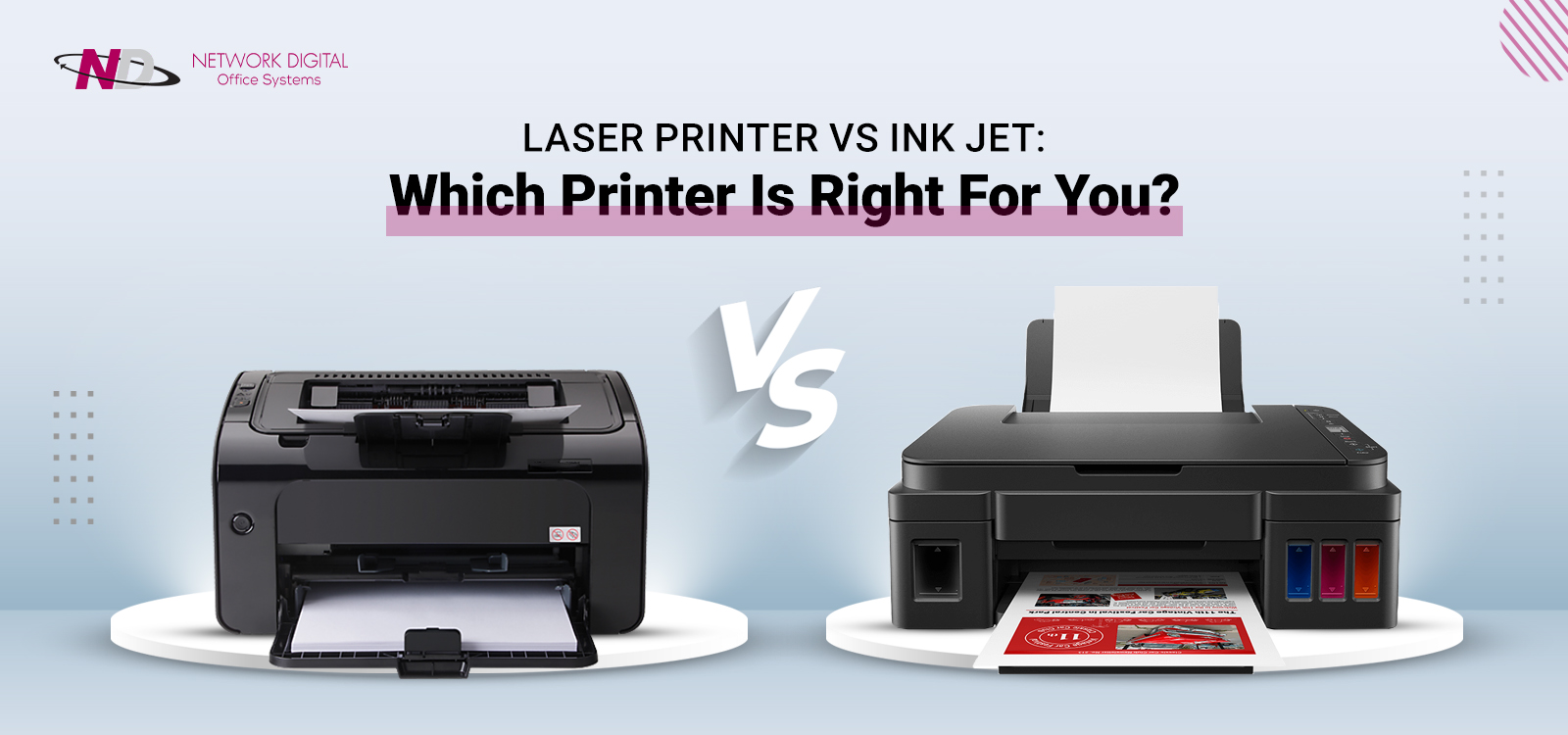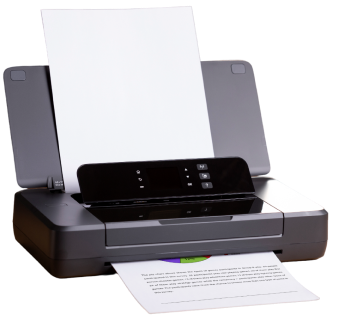Your business may be losing time and money every day because of frustrating printer problems, like faded prints, constant paper jams, or dried-up cartridges. These issues can slow down your entire workflow.
They don’t just waste time. They can delay client presentation, hold up important business contracts, and force your resources to fix printer parts instead of focusing on real work.
There are many printer options out there, but finding the right one can feel overwhelming. The key is choosing a solution that fits your specific business needs.
In this blog, we will assist you in making a smart choice that improves your productivity, reduces expenses, and finally puts an end to your daily printer troubles.
Working Principle of Inkjet Printers vs. Laser Printers
When exploring office or home printer options, you may have ideally come across two varieties of printers. Inkjet printers and laser printers.
Before investing in either laser or inkjet printers, you must fully understand the key differences between inkjet printers vs. laser printers. This will help you identify which will be best for your specific needs.
One key difference between inkjet and laser printers is in their working principle. Both can produce clear, high-quality prints, but they use different methods to print.
Inkjet printers feature small nozzles that produce ink droplets over the paper. This procedure creates vividly colored images, making them an excellent choice for creating high print resolution graphics for documents.
Laser printers use toner powder instead of pigment or dye-based ink. They deliver electrostatically charged dots on a light-sensitive drum that draws toner powder. The toner is then put on the paper and fixed with a heating process. Laser printers are ideal for accurate black-and-white and brilliant color prints in large volumes.
Which Is Better? Inkjet or Laser Printer for Office Use
The most essential question when investing in a new printer is: Inkjet or Laser—which suits you better? There’s no denying that both have winning strengths and some underwhelming weaknesses.
So, we have analyzed and broken them down to help you decide.
Print Quality: Inkjet vs Laser Printers
Both inkjet and laser printers promise to be helpful in the quality of high-volume prints. Inkjet printers can be a fine bet if your business involves photo printing and color reproduction. They utilize dye- or pigment-based ink to deliver satisfying results.
Inkjet Printers
Inkjet printers are capable of producing color images. We recommend using them to print detailed photographs and graphics-heavy color documents. Their ability to blend colors seamlessly enables them to be a good fit for:
- Marketing materials
- Photo prints
- Artistic projects
- Documents with complex graphics
Progress in inkjet technology, including adjustable speed options and page-wide print heads, has improved printing speeds and made modern inkjet printers more competitive, especially for small print jobs.
Laser Printers
Laser printers serve the purpose of delivering accurate text and clean lines. They are best suited to professional-looking reports and text-heavy documents. Laser printers can be good at:
- Contracts and legal papers
- Business documents
- Large-volume print jobs
- Black and white printing
An affordable color laser printer deliver premium and efficient printing for graphics and text, making them a fine fit for high-volume office environments.
Speed and Volume: Inkjet vs Laser Printers
If you are after high volume and print speed, laser printers make a great choice. They provide faster print speeds, thereby pairing well with high-volume printing environments.
Inkjet Printers
Inkjet printers are generally slower, delivering an average of 5-15 pages per minute. They make an excellent fit for lower-volume printing needs. But, they offer:
- No warm-up time for occasional prints
- Faster photo printing
- Quieter operation
Most inkjet printers have self-cleaning routines to avoid printhead clogging. However, prolonged idleness and heavy use can lead to ink costs and higher maintenance.
Laser Printers
Laser Printers can be incredibly quick at printing, often delivering 20-40 pages per minute. They are designed to serve high-volume printing and efficiently handle extensive print jobs. Benefits include:
- Quick first page out
- Faster warm-up times
- Efficient large-batch printing
- Less frequent paper reloading
Laser printers can be excellent at printing text, delivering accurate and clear letterforms that beat most inkjets.
Cost Considerations: Inkjet vs Laser Printers
When comparing expenses, you must look beyond the initial purchase price. Focus on the long-term costs, including the maintenance and cost of replacement ink or toner and paper. Laser printers ensure lower cost per page and higher-grade print quality compared to inkjets, making them suited for businesses that produce basic documents.
Inkjet Printers
Inkjet printers often promise a nominal upfront cost. However, it can be more expensive to operate since inkjet cartridges cost more. Consider:
- Higher cost per page for ink
- Lower initial investment
- More frequent cartridge replacements
- Potential for ink to dry out if not used regularly
Laser Printers
Laser printers could cost more, but toner cartridges deliver for the long run and have a lower cost per page. The benefits include:
- Lower cost per page for toner
- Higher upfront cost
- Less frequent cartridge replacements
- Toner doesn’t dry out over time
Color Options: Inkjet vs Laser Printers
A frequent question is whether laser printers can deliver color prints. Although they are competent at it, they maintain some considerations:
Using inkjet printers to print images can result in premium, vibrant-color prints and detailed images, making them a fitting match for photo reproductions.
Conversely, laser printers can deliver sharp text and graphics. They can also work well with printing images, albeit not at the level of inkjet printers.
Color Laser Printers
Color laser printers are available in most business settings, delivering premium color prints. But it’s important to mention that they come at a steeper price than monochrome laser printers. They offer:
- Fast color printing
- Vibrant, consistent color
- Durability of laser technology
Inkjet Printers
Inkjet printers always promise color printing as a standard feature. They provide:
- Excellent for photo printing
- Wide color gamut
- More affordable color printing option
Ink And Toner: Inkjet vs Laser Printers
Another common question is whether laser printers use ink. The immediate answer is no: laser printers use a toner in a powdered form. This contributes to quicker printing speeds and fewer clogging issues, making them ideal for text-heavy documents.
Laser Printers
Laser printers utilize toner, a fine powder that’s melted onto the paper. It promises a bunch of advantages:
- Smudge-resistant prints
- Longer-lasting supplies
- No risk of drying out
- Ideal for long-term storage of documents
Inkjet Printers
Inkjet printers involve liquid ink that’s sprayed onto the paper. It brings its benefits:
- More paper-type versatility
- Better for vibrant color mixing
- Often cheaper for low-volume users
Paper Handling and Versatility: Inkjet vs Laser Printers
Your choice of printer type can influence the types of paper you may use and the printing options available. Diverse printer types, including laser and inkjet printers, have distinct advantages based on speed, print quality, volume, and physical size. It benefits the consumers by allowing them to arrive at an educated decision.
Inkjet Printers
Inkjet printers typically promise versatility in paper handling:
- Can work on a variety of paper types, including glossy photo paper
- Often supports borderless printin
- Some models can work on larger paper sizes like 11×17.”
- Better for printing on non-paper materials
Laser Printers
Laser printers typically lack paper options but perform well in standard document printing:
- Fitting for standard paper size
- Can manage superior paperweights
- Some models present automatic duplexing
- Ideal for large-volume printing of standard documents
Environmental Considerations: Inkjet vs Laser Printers
We recommend considering the environmental impact of your printer choice as sustainability quickly becomes a priority:
Inkjet Printers
- Often consume less energy, especially when idle
- Some models involve recycled plastics in construction
Laser Printers
- Use less energy for high-volume printing
- Toner cartridges often have higher page yields
| Feature | Inkjet Printers | Laser Printers |
| Print Quality | Better for photo prints and color-rich graphics. Ideal for marketing, photos, and artistic documents. | Excellent for sharp text and clean lines. Ideal for reports, contracts, and high-volume documents. |
| Speed & Volume | Slower (5–15 ppm), good for low-volume jobs. Faster photo prints, no warm-up time. | Faster (20–40 ppm), ideal for high-volume printing. Quick warm-up, efficient batch printing. |
| Cost Efficiency | Lower upfront cost but higher cost per page. Frequent ink replacement. Ink may dry out. | Higher upfront cost, lower cost per page. Toner lasts longer and doesn’t dry out. |
| Color Printing | Superior for color blending and photo quality. Color included by default. | Available in color models; good color for graphics but not photo-quality. Higher cost for color models. |
| Ink vs. Toner | Uses liquid ink. Vulnerable to drying/clogging. Good color mixing. | Uses toner (powder). Smudge-resistant, no drying, ideal for long-term storage. |
| Paper Handling | Works on varied paper types (glossy, large sizes, borderless, non-paper). | Best for standard paper types and weights. Supports duplexing, ideal for document printing. |
| Environmental Impact | Lower idle energy consumption. Some models made with recycled materials. | Energy efficient for large volumes. Higher page yield from toner. |
Also Read : What is a All-in-one printer? A comprehensive guide
Do Laser Printers Dry Out Like Inkjet Printers?
Laser printers don’t dry out like photo inkjet printers. This is because no liquid ink is used in the printing process.
Laser printers use a powder-like substance as a toner. Thus, it doesn’t dry out over time like ink. However, the many components in a laser printer require cleaning and occasional maintenance. This will help keep the device working in optimal condition.
For instance, you may have to swap the fuser at intervals as it can wear down over time. Dirt may also find a home inside your printing device, thereby interfering with the printing process. We recommend a routine checkup of the laser printer with some basic maintenance if you want to keep it running smoothly.
What Is The Upfront Cost Of An Inkjet Printer vs A Laser Printer?
Inkjet printers warrant a lower upfront expense regarding the upfront price. It enables them to fit in as a viable option for home users or those who don’t print frequently.
The initial expense of ownership generally depends on the price of ink cartridges. Ink for your printing needs could be expensive, especially if you print regularly or in high volumes. With time, the expense of replacement cartridges could exceed the initial cost of the printer itself.
In contrast, although color laser printers ask for a higher initial price point, they typically ensure lower operating costs.
Toner cartridges can serve you longer if compared to ink cartridges. They can print notably more pages before calling for replacement. For users with bulk printing tasks, the savings on toner can result in a lower total expense of ownership over time.
What Factors Should You Consider When Choosing Inkjet vs. Laser Printer?
Picking between an inkjet and a laser printer depends on your specific needs and preferences. If you are exploring the potential of both printers before buying, we recommend checking several important factors. They can help you in determining which is better for your needs, including:
1. Color or Black And White
If you plan to print in color, both laser and inkjet printers can ensure the vivid colors and aesthetically rich images you need. However, if you need to print only in black and white, you can opt for a monochrome laser printer.
2. Price
There are a handful of suppliers available in the market that promise a reasonable cost per page of inkjet vs. laser printer. If copy, scan, and fax functions are not on your list, laser printers make an excellent choice. Inkjet printers generally come at a budget-friendly cost, while laser printers may cost more to buy initially. However, they promise a lower total cost of ownership over time.
3. Quality
Although inkjet printers offer premium color printing, laser printers also can deliver solid color and black-and-white results. Both laser and inkjet printers can give you accurate and crisp text that’s easy to decipher, as well as brilliant color images and graphics fitting for business documents. Plus, inkjet printers also ensure the ability to deliver borderless (edge-to-edge) printing.
4. Print Speed and Volume
What is the timeframe and number of documents that you need? Laser printers offer quick results in bulk, making them a fine option for a small business. Small office setups with lower print volumes believe inkjet printers can meet their printing needs.
5. Page Yield
Both ink and toner cartridges are available in various page yield options. This will help you select the ideal choice for your printing needs. Both laser and inkjet printers promise high-yield cartridge options. These enable you to print more pages before asking for replacement cartridges, which could help you cut down the total cost of ownership, regardless of the type of printer.
6. Business Features
Laser printing devices may offer added business-centric features if you intend to use the printer for business. They could include higher replacement supply yields, optional paper trays, and improved security options.
Laser Printers vs. Inkjet Printers: Choose According To Your Business Size
Identifying the best inkjet vs. laser printer for small businesses can be challenging. Therefore, we recommend that you do some research. There have been countless studies to date that predict businesses to go completely digital. Although the prospect of going paperless will take out the need for printers and copiers, it just hasn’t happened yet.
You must focus on the type of documents you print, your print volume, and whether you need color or black-and-white printing. Laser and inkjet printers are fine options for small businesses, while multifunction printers could benefit larger businesses.
The market is saturated with a wide array of business-oriented printer models. However, picking the right option is not as simple as choosing between laser and inkjet printers. For instance, you must assess your running costs, monthly output volumes, integration, efficiency, usability, and more.
Understanding the difference between inkjet and laser printers will help you accumulate the practical knowledge necessary to make an educated decision and commit to the best printer for your organization.
Choose the Right Printer for Your Business with Network Digital
As identified throughout this blog, both commercial office printer types have strengths and weaknesses. However, some recent breakthroughs in Inkjet technology have tipped the balance.
Inkjet printers promise lower startup expenses, reasonable running costs, and superior versatility. Although laser printers are reliable for high-volume tasks with impressive maximum monthly duty cycles, their color printer technology hasn’t evolved notably in recent years.
Are you still undecided about the good printer type that is a good fit for your business? Reach out to Network Digital to avail expert guidance and service. They can help you navigate the startup costs of Inkjet vs. laser printers in a superior fashion.

